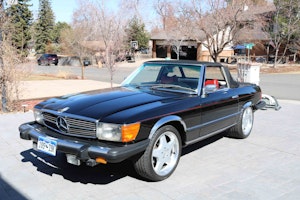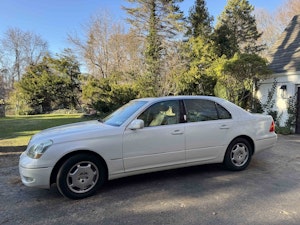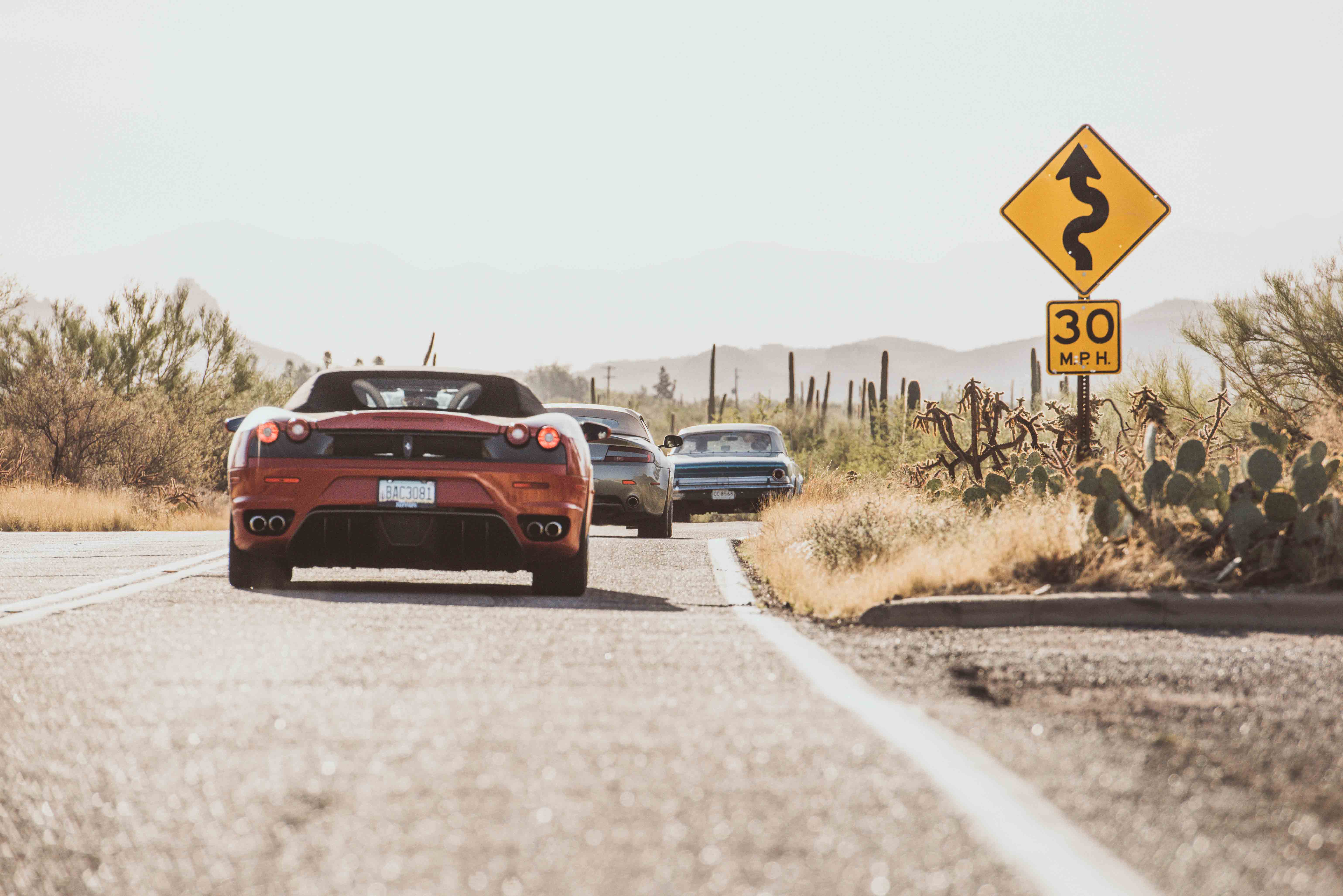Media | Articles
Tips for caravanning together without hogging the road
You’re driving your collectible car to some event far from home. In doing so, you’re living the dream on the open road, the envy of all you pass (or who pass you, depending on the speed of your steed). Rather than being a lone wolf, you’re taking advantage of safety in numbers and caravanning with other like-minded enthusiasts. You look ahead of you and in the rear-view mirror, see the other vintage cars, and think this is so cool. If you’re road-tripping with other folks who have the same car as you, it’s almost like driving in a hall of mirrors, seeing the car you love stretching on in front of and behind you.
While snaking along in a caravan like this can be intoxicating, it is also problematic. And, counter-intuitively, it is more difficult on a multi-lane highway than it is on a local two-lane country road. When you’re alone on a highway, one car can keep right, then adroitly, efficiently, and safely pass left, and hug right again, but a whole caravan of cars simply can’t move together as one, no matter how badly you may want to keep your group together.

And the larger the group, the more difficult staying together is. If you do the math, a caravan of three small (15-foot) cars with one car length between them occupies 75 feet bumper-to-bumper, the length of a tractor-trailer. If you increase the caravan to five cars and allow for a more reasonable two-car length between them, the total length swells to nearly 200 feet. That’s about two-and-a-half tractor trailers. Think about that before you try get five cars to change lanes in lock step.
The mechanics of the collector-car caravan
As a former engineer, I think about it in terms of a filter being imposed on the frequency of the lateral motion of the caravan. One car can make very rapid movements—cutting left to pass and then getting back in the right lane—but if you’re trying to keep the caravan together, its effective length means that it can’t maneuver nearly as quickly as a single car. To put it another way, you can move quickly, or you can keep the caravan together. Often you can’t do both.
Marketplace
Buy and sell classics with confidence
Fortunately, the length of a caravan is usually self-limiting. Questions of how fast people like to drive, how long they like to go between rest stops, and whether they want to snack while driving or stop for a sit-down lunch will naturally break a large caravan into smaller run groups. This is a good thing in terms of making caravan size manageable.


The problem, of course, isn’t just the length of the caravan but the amount of traffic and the generally poor lane discipline on American highways. You often have people driving far too slowly in the passing lane, effectively forcing others to go around them on the right. And at the other end of the scale, you have people who think it’s their inalienable right to exceed the traffic speed by 20 mph, regardless of congestion, and who weave through traffic in order to make that happen. If you are running in a caravan of cars, it is your responsibility to not do either of these things. They’re bad enough when the offender is alone.
How to play nice
I have a very simple cardinal rule when caravanning: Whatever the caravan does to stay together shall not impede the flow of traffic. If you are leading a caravan, it’s your responsibility to keep this in mind. If the caravan is in the right lane and speed has slowed enough that you want to cut left and pass, you need to watch your mirrors and pick a point where there’s room for not only you, but for the other cars in the caravan, as well, or at least most of them. The same holds true when pulling back into the right lane. If the act of trying to keep your cars together as you change lanes causes other drivers to slow down, especially when pulling into the passing lane, you probably shouldn’t be doing it.
If you’ve caravanned with other drivers for a while, you may find that an almost telepathic level of communication begins to develop. For example, the rear-most car in the caravan will notice that there’s a hill ahead, and that, in the right lane where the caravan currently is, there’s a slow-moving truck. Rather than wait for the lead car to signal left, the rear-most car may pull right and preemptively block out space in the passing lane for the cars in the caravan in front of him. Note that this isn’t the same as blocking the flow of traffic; it’s more like having one of those long fire engine ladder trucks with a tiller (a second steering wheel in the back) that helps the caravan shift lanes more quickly as a group.

Conversely, as lead car, I’ll often flash a preemptive directional signal. That is, before I actually signal and then pull into the left lane, I’ll flash my signal once or twice, indicating to my run group members that I’m going to pull left as soon as the next car or two passes. The rear-most car will usually see this and block out space to help the group change lanes as efficiently as possible.
But you don’t always have to be in lock step. It’s important to keep the caravan elastic. Sometimes, on two-lane highways with trucks and hills, where the trucks pass each other with a speed differential that may be only two or three miles per hour, it may be difficult to get one car into the passing lane, to say nothing of the entire caravan. Just chill. The last thing you want to do is take a long column of stressed-out motorists, all driving as fast as they can to get past a line of trucks, and force them to hit the brakes because you want to get not only your car in but the entire caravan into the passing lane. In this case, it’s the responsibility of the other cars in the caravan to let the lead car go and to pass whenever they can. The road goes on forever. Everyone will catch up.
Harnessing technology
These days, I, like many people, use the smartphone app Waze that crowd-sources both traffic information and speed trap locations. While I certainly don’t want to get a ticket for going 71 mph in a 65 zone, when you’re leading a convoy you do need to be careful that you don’t overreact to every one of Waze’s audible “police reported ahead” warning.

If you move into the left lane and speed up to pass a car or a truck, and the rest of your convoy follows you, and then you hear a Waze police warning, don’t go jamming on the brakes and frantically try to get back into the right line. That will cause the rest of the convoy to do the same. This will be very surprising to other drivers in the left lane, and can be outright dangerous. Waze’s audible warnings typically come half a mile before the reported location, but the visible icons for reported speed traps are usually visible on the screen well before that, so watching the screen can help reduce the chance of getting surprised by a speed trap warning mid-pass.
The same holds true for using a radar detector. X-band warnings from always-on radars usually start quite a distance away, but the instant-on K-band radars and lasers give no warning, so when caravanning, you need to resist the impulse to mash the brakes at the first “BRAAAP” of the detector.
Like the lane-changing “filtering” necessary when traveling in a convoy, I also think that changes in speed require some filtering; you shouldn’t be speeding up or slowing down as quickly as you would if you were traveling by yourself. That sometimes means loafing in the right lane longer than you’d like, or staying with a column of fast traffic in the left lane, even if it’s moving more briskly than you’d prefer, until there’s ample room to get back over.
With a little discipline and a few adjustments, running with a convoy can be a joy. But remember: Whatever the caravan does to stay together shall not impede the flow of traffic. When you’re driving in a caravan of highly visible cars, you’re already living the dream. Don’t be living the dream but looking like a jerk.
***
Rob Siegel has been writing the column The Hack Mechanic™ for BMW CCA Roundel magazine for 30 years. His new book, Just Needs a Recharge: The Hack Mechanic™ Guide to Vintage Air Conditioning, is now available on Amazon. You can order a personally inscribed copy here.














